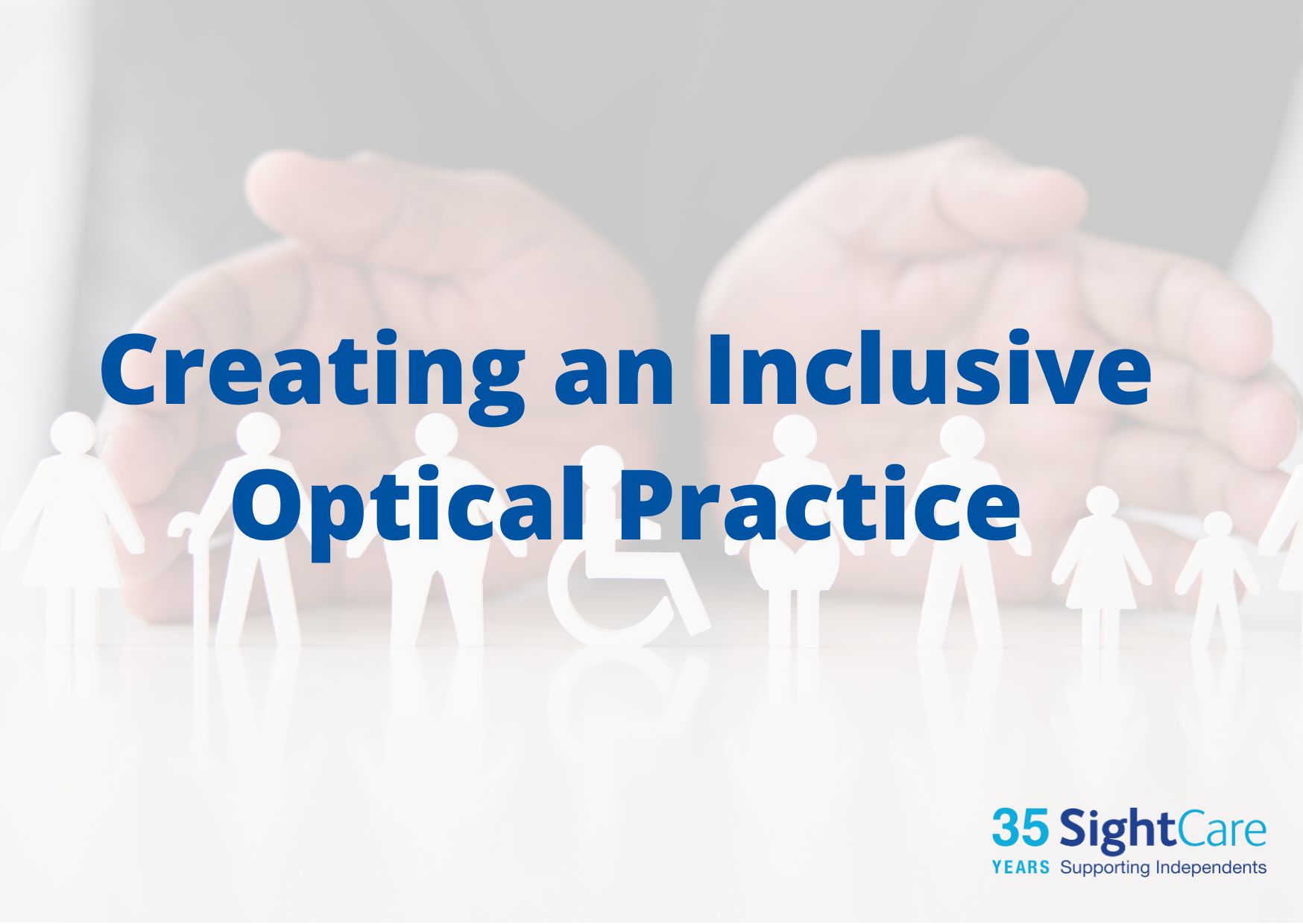Creating an Inclusive Optical Practice
Fostering an inclusive environment within your optical practice is not just a moral imperative, but also a smart business strategy. Inclusion ensures that all patients, regardless of their background or abilities, feel welcomed and well-served. Here at SightCare, we believe in the power of inclusivity to transform patient experiences and improve eye care for everyone. Here’s how you can create an inclusive optical practice.
Understanding Inclusivity in Optical Practice
Inclusivity means more than just treating everyone equally; it means recognising and addressing the unique needs of each patient. This involves creating an environment where all individuals, including those from different cultural backgrounds, those with disabilities, and those with diverse gender identities and sexual orientations, feel respected and valued. As a healthcare provider, it is integral to make sure your team are prepared to suit the needs of each client.
Staff Training and Sensitisation
Your team is the front line of your practice. Comprehensive training can make a significant difference. Encourage your staff to:
- Learn and use inclusive language: Avoid assumptions about gender, marital status, or cultural norms.
- Respect personal pronouns: Correctly use patients’ preferred pronouns.
- Understand cultural differences: Be aware of cultural practices that may affect eye care and eyewear choices.
Accessible Facilities
Ensure that your practice is physically accessible to all patients. This includes:
- Wheelchair access: Ensure that entrances, consultation rooms, and optical display areas are wheelchair accessible, and where they are not, ensure this is communicated via your website.
- Inclusive visuals: Provide written materials in accessible formats, such as large print or braille.
- Assistive technology: Invest in technologies such as screen readers for patients with low vision.
- Auditory: If a patient is hard of hearing, having loud music may make it harder for them to hear you. It’s also best practice to look at a person when speaking and not turn your head, so they can hear you better or lip read.
Inclusive Communication
Communication is key to inclusivity. Make sure that:
- Your website is accessible: Use alt text for images to add descriptions of the images, ensure that it is navigable via keyboard, and compatible with screen readers. You can also check it is WCAG compliant.
- Emojis: While emojis are great fun, usimng too many means that a screen reader has to descrive them. You can also check that emokis mean what tou think they do on Emojipedia.
- Offer multilingual support: Provide important information in multiple languages (perhaps you can request these from charities and orgnaisations who deal with specific eye condititions). See if any of your team can speak more than one language so you can benefit from their skillset for certain patients.
- Be patient-centric: Listen to your patients’ needs and concerns, and make sure they understand their treatment options. You can request plain-speaking guides on certain conditions for those who need text written in an easy-to-understand format.
Culturally Sensitive Care
Cultural sensitivity involves understanding and respecting the cultural practices and beliefs of your patients. To achieve this:
- Learn about different cultural practices: Some cultures have specific beliefs about health and medicine that can affect eye care.
- Celebrate diversity: Mark cultural holidays and awareness days within your practice and on social media to show support and inclusivity.
Feedback and Continuous Improvement
Inclusivity is an ongoing process. Regularly seek feedback from your patients and staff to identify areas for improvement. Use surveys, suggestion boxes, and patient interviews to gather insights.
Community Engagement
Build relationships with diverse communities to better understand their needs and show your commitment to inclusivity. Participate in local events, work to promote eye exams in underserved areas, and collaborate with community organisations.
Diverse Product Offerings
Ensure that your product range caters to a diverse clientele. This might include:
- Wide range of frame styles and sizes: Accommodate different facial structures and shapes and aesthetic preferences.
- Specialty lenses: Offer lenses that meet the needs of patients with specific conditions.
Creating an inclusive optical practice is about more than just policy changes; it’s about cultivating an environment where every patient feels seen, heard, and valued. At SightCare, we believe that inclusivity leads to better patient care and a more successful practice. By implementing these strategies, you can ensure that your practice is welcoming to all, helping you to build a loyal and diverse patient base.

